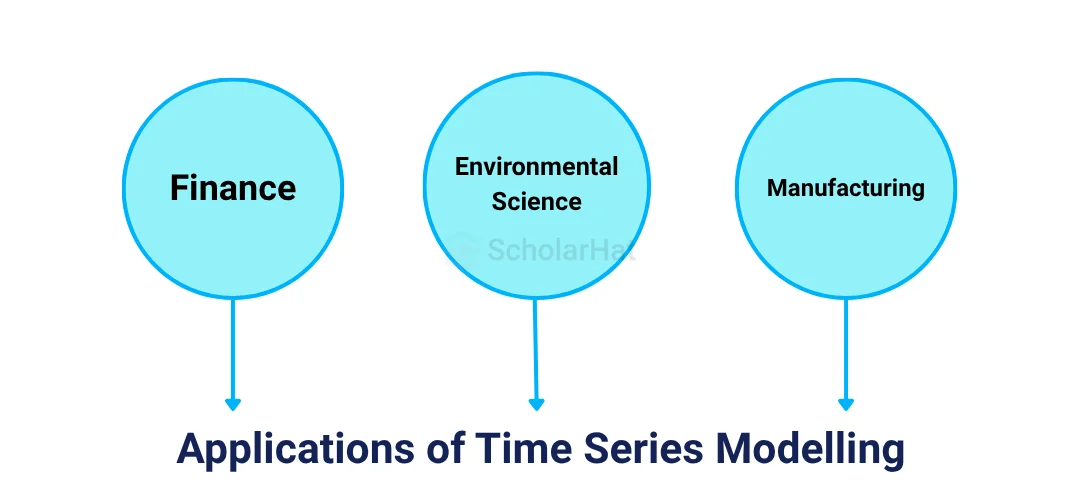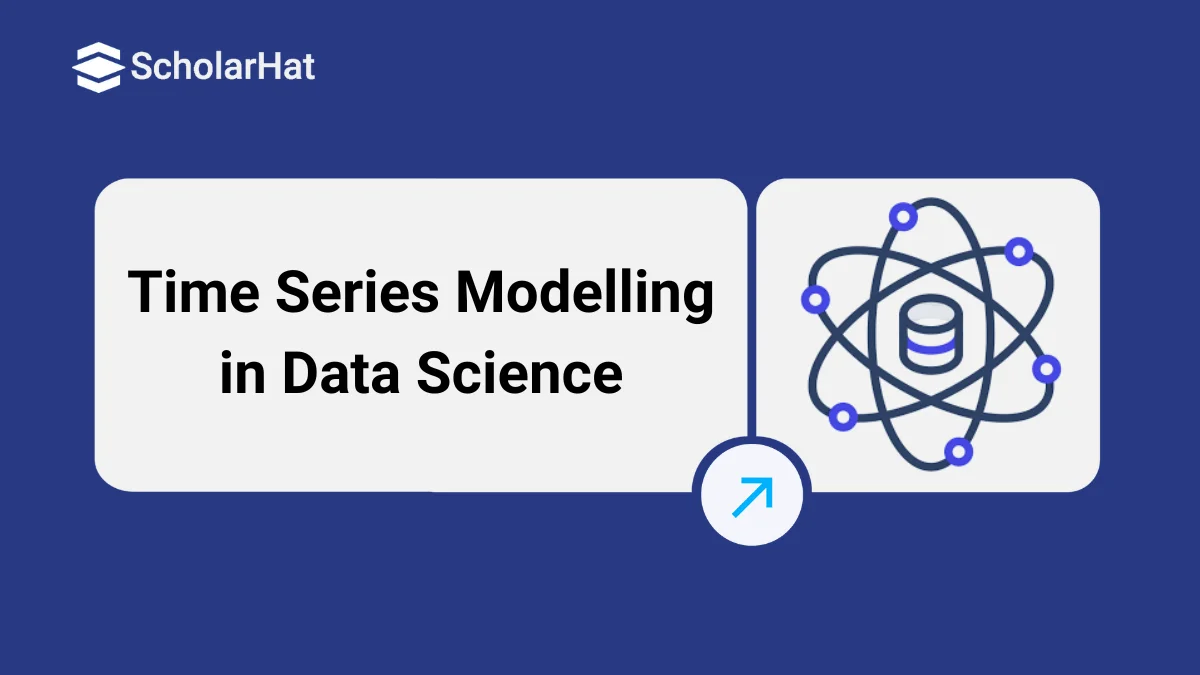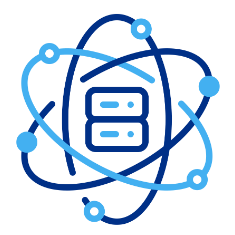19
DecTime Series Modelling in Data Science
Introduction
Effective data analysis becomes more and more important as organizations gather more and more data. Time series data, or data that is gathered over time, is one sort of data that is especially valuable in data science tutorial. Using the time series modeling technique, you may examine this kind of data and forecast future patterns.
What is Time Series Data Analysis?
A data science statistical method called time series data analysis is used to examine data that has been gathered over time. In disciplines where it is crucial to track changes over time, such as finance, economics, & environmental research, this sort of data is frequently used. To forecast future trends, spot patterns, and comprehend the underlying mechanisms guiding the data, time series data can be used.
Examples of Time Series Data
Time series data can take a variety of forms. Common examples include:
- Stock prices: One of the most well-known uses of time series data is stock prices. They are gathered throughout a period and can be applied to forecast upcoming trends.
- Weather data: Another typical example of time series data is weather data. It is gathered over a while and can be used to monitor changes in the weather-related variables precipitation, temperature, and others.
- Traffic data: Time series data are gathered to monitor variations in traffic volume with time. Planning for transport and infrastructure is based on this data.
Read More - Best Data Science Interview Questions
Why Use Time Series Analysis?
There are numerous reasons for using time series analysis. Among the most popular reasons are:
- Making predictions: Future trends can be predicted using time series analysis. This can be especially helpful in industries like banking and economics where being able to predict market shifts is crucial.
- Finding patterns in the data: Time series analysis can be used to find patterns in the data that might not otherwise be obvious. This can be especially helpful in disciplines like environmental science, where it's critical to comprehend how several variables interact with one another.
- Understanding the underlying processes: Time series analysis can be used to comprehend the fundamental processes underlying the data. This is especially helpful in professions like engineering where it's critical to comprehend how several factors relate to one another.
Types of Time Series Models
Time series models come in a wide variety of forms. The most typical varieties include:
- Autoregressive (AR) Models: Time series models known as autoregressive (AR) models are used to forecast future values based on historical data. This kind of model assumes that present values influence future ones.
- Moving Average (MA) Models: A sort of time series model called a moving average (MA) is used to create forecasts based on the mean of historical data. This kind of model assumes that future values depend on the mean of past values.
- Autoregressive Integrated Moving Average (ARIMA) Models: Time series models called Autoregressive Integrated Moving Average (ARIMA) models combine the advantages of AR and MA models. For data with a trend or seasonal component, this kind of model is especially helpful.
- Seasonal Autoregressive Integrated Moving Average (SARIMA) Models: A form of time series model called the Seasonal Autoregressive Integrated Moving Average (SARIMA) model is used to model data that has a seasonal component. For data that exhibit a recurring pattern over time, this kind of model is especially helpful.
How to Build a Time Series Model?
A time series model is built in many steps. These include:
- Determine the Time Series Model Type: Finding the right kind of model for your data is the first step in creating a time series model. Your data's features, such as whether it contains a trend or a seasonal component, will determine this.
- Estimate the Model's Parameters: Once the right model has been chosen, you must calculate the model's parameters. This entails estimating the values of the model's parameter values using statistical approaches.
- Assess the Model's Performance: The last step is to assess the model's performance. This entails contrasting the model's anticipated values with the data's actual values. The model is deemed to have a good match for the data if the projected values are close to the actual values.
Seasonal Models in Time Series Analysis
A sort of time series model called a seasonal model is used to model data that repeats across time. These models are very helpful when analyzing data with a seasonal component, such as sales data that peaks around the holidays.
- SARIMA models (seasonal autoregressive integrated moving average): A form of time series model called the Seasonal Autoregressive Integrated Moving Average (SARIMA) model is particularly helpful for data that includes a seasonal component. The characteristics of both AR and MA models are combined in this sort of model, which may take into consideration both trend & seasonal components in the data.
- Seasonal Decomposition of Time Series: A time series can be divided into its trend, seasonal, & residual components using the seasonal decomposition of time series technique. Understanding the underlying mechanisms guiding the data and spotting patterns that would not otherwise be obvious can both benefit from this technique.
Time Series Modelling Tools and Software
For time series modeling a wide range of tools and software programs are available. Among the most widely used tools are:
- R: For statistical computation and data analysis, R is a well-known programming language. It contains a large selection of programs created especially for time series modeling.
- Python: Another widely utilized programming language for machine learning and data analysis is Python. It contains a large selection of libraries made especially for time series analysis.
- SAS: Software for data administration, analysis, and visualization in data science is available under the name SAS. It contains a large selection of tools made especially for time series modeling.
Applications of Time Series Modelling

It has many different uses. The following are some of the most popular applications:
- Finance: Making predictions regarding market movements using this method is very helpful in the world of finance. Investors utilize this data to inform their decisions regarding the purchase and sale of stocks, bonds, and various other financial assets.
- Environmental Science: In environmental science, this is employed to monitor changes in temperature, precipitation, and various other environmental variables across time. Climate change & environmental management policies and practices are informed by this information.
- Manufacturing: Manufacturing businesses also utilize this to monitor variations in production levels over time. Efficiency is increased and production processes are optimized using this information.
Best Practices for Time Series Modelling
When developing a time series model, there are various best practices that you ought to adhere to. The following are some of the most significant best practices:
- Utilise Sufficient Data: Having enough data is essential when creating a time series model. This will make it more likely that the model will be accurate and be able to identify any pertinent patterns or trends in the data.
- Test several models: When developing a time series model, it is crucial to test various models. This will make it easier to make sure that you are selecting the best model for your data.
- Make use of out-of-sample testing: When developing a time series model, out-of-sample testing is crucial. This entails putting the model to the test using data that wasn't utilized to train it. This will make it more likely that the model will be able to anticipate fresh data correctly.
Summary
An effective method for analyzing time series data as well as forecasting future trends is time series modelling. Building precise and trustworthy time series models that can be applied in a variety of applications requires adhering to best practices and employing the proper equipment and software. Time series modeling may help you unleash the potential of your data and make more informed decisions, regardless of whether you work in banking, environmental research, manufacturing, or any other industry that uses time series data. Enrolling in Data Science Certification Training can equip you with the skills to effectively utilize time series modeling techniques in various domains.






